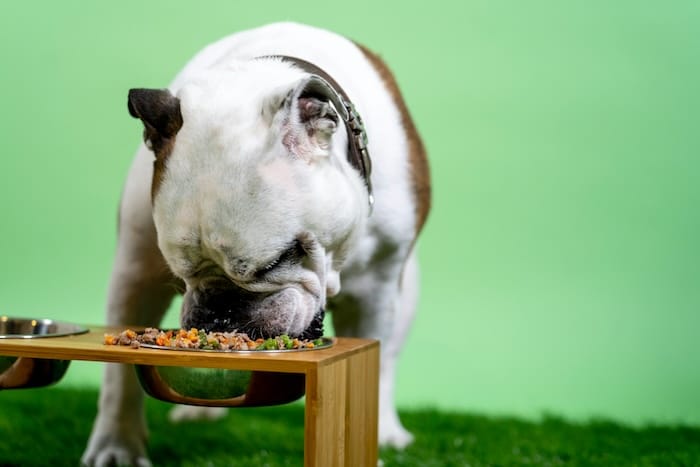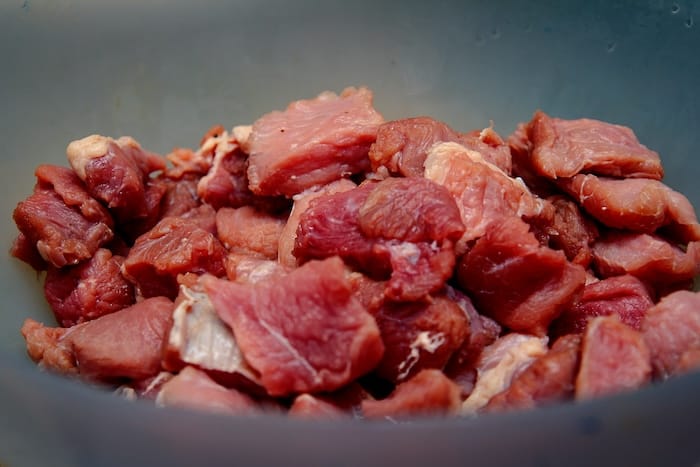The trend of raw feeding your pets has developed in some highly developed countries. Raw meat is fed with commercial diets or home recipes of recent origin. This replacement of heat‐treated processed food has been fueled by health benefits expected in pets and mistrust in factory‐produced pet food. It provides health benefits such as better coat, dental health, and general vigor.
Nevertheless, switching to a raw diet cannot replace pet food with raw meat. It necessitates a more sophisticated consciousness of the dietary needs of the zoological kingdom, including adequate nutrients for pets’ health and longevity. Before switching your pet to a raw diet, this article explains key raw feeding concepts.

How do you raw feed your pets?
Raw feeding your pets is undoubtedly essential to fulfilling their nutritional requirements. However, the feeding should be calculated so your pet gets ample nutrients and minerals. This will also help prevent nutrient deficiency or excessiveness.
Raw Feeding for Dogs
As omnivores descend from the carnivore lineage, dogs need a balanced diet of macronutrients and micronutrients. Protein, a major contributor to meat, accounts for the construction and recovery of muscles. Fats contain essential fatty acids for skin, hair coat, and cellular functionality, while carbohydrates, though not essential, can supply energy and fiber in moderation.
Vitamins, minerals, and Omega-3 and Omega-6 fatty acids are among the micronutrients contributing to metabolism, immunity, and overall well-being. Sufficient hydration should be prioritized to ensure proper body functioning.
High-quality meat is the principal protein supplier, focusing on variability to provide the full range of nutrients. Bones, chosen and monitored correctly, provide the necessary minerals and dental benefits.
Enriched with minerals and vitamins, liver and kidney meats are nutrient powerhouses. Essential additions like calcium, phosphorus, and omega fatty acids can provide the necessary nutrients that are lacking.
Raw Feeding for Cats
Cats are carnivores, meaning they can obtain a lot of protein only through meat consumption. Provide different kinds of meat, such as chicken, turkey, beef, and lamb, so various players can choose.
Parts of the animals, like the liver, heart, and kidneys, are superior in quality. Raw bones provide dental health, calcium, and other vital minerals, unlike some manufactured bones that are processed. Supply raw meaty bones specific to the cat’s size and chewing strength, such as chicken necks, wings, or backs. Organ meats will invariably be an excellent source of vitamins and minerals for cats, which are critical for maintaining their health.
Fats are a concentrated form of energy, and the actual fatty acids responsible for proper skin and coat are also beneficial to an individual’s general quality of life. Though a correctly balanced raw food diet can give necessary nutrients almost everywhere, some supplements could be needed on top to perfect nutritional adequacy. Omega-3 fatty acids, including fish or krill oil that can perk up the skin and coat in dogs, are especially important.
The amount of water a cat needs is basic for its body to work properly. The water should be fresh and clean, and it is essential to provide it when feeding the cat a raw diet, which is usually low in moisture.
How to find a suitable raw-feeding diet for your pets?
A proper diet plan is necessary for the health of your pets. You can consult your pet’s vet for a healthy and happy diet plan. Also, you can search on the internet for the same.
You can make a required diet plan for your pets with the Raw Paws Pet Food. This website has many features to make a perfect plan for raw feeding your pet. You can calculate the amount of food to give your pets, their eating schedule, meal preparation, sanitation, etc.
You can also order pre-made raw feed for your pets from their website. Their food is highly nutritious and suitable for different breeds of pet animals.

Common misconceptions about raw feeding your pets
There are a lot of misunderstandings about raw feeding. The raw food is completely safe; such ideologies are:
- Raw Diets Cause Dental Damage
- Transitioning to Raw Feeding Is Difficult
- Raw Diets Are Expensive
- Raw Diets Lack Nutritional Balance
- Raw Bones Are Dangerous
Conclusion
In summary, raw feeding for pets is the science that demonstrates the need to understand pets’ dietary needs and their evolutionary background. Moving animals onto a raw diet requires a gradual approach where a close check is made on the digestive health and adaptation process.
Owners need not forget to watch out for their pet’s reaction to the new diet. Owners should also consider seeking professional assistance when the pet’s response does not match their expectations. Notably, a balanced diet should contain diverse meats, organs, and bones because they meet the organism’s needs.
Furthermore, we know the need to dispel the myths and uncertainty attached to the raw food diet, hence the need to address concerns around this approach. Feeding your pets ensures that any food you serve is always safe and appropriate for them. Besides that, track your pet’s health and change the diet as needed to make sure they enjoy good health while following the raw feeding program.

FAQS
What are the benefits of raw feeding?
The raw feeding of your pets has several benefits. Some of the health benefits of raw feeding are:
- Provides Species-Appropriate Diet and nutritional food
- Improves Digestion
- Provides healthy coat and skin
- Improves dental health
- Helps in weight management
What is a raw food diet?
Raw food diets for animals include raw meat and animal by‐products using commercial preparations or home recipes. This shift from heat‐treated processed food has been driven by perceived health benefits to pets and a suspicion of industrially produced pet food.
When did raw feeding start?
Raw feeding was given momentum by non‐specialist publications in the 1990s and early 2000s that advanced the idea of a more “natural” diet for pet dogs and cats.
Is raw feeding safe for animals?
Raw feed is safe for pets with proper research and a diet plan. When you raw feed your pet, ensure all the nutritional requirements are fulfilled.
